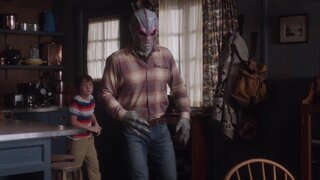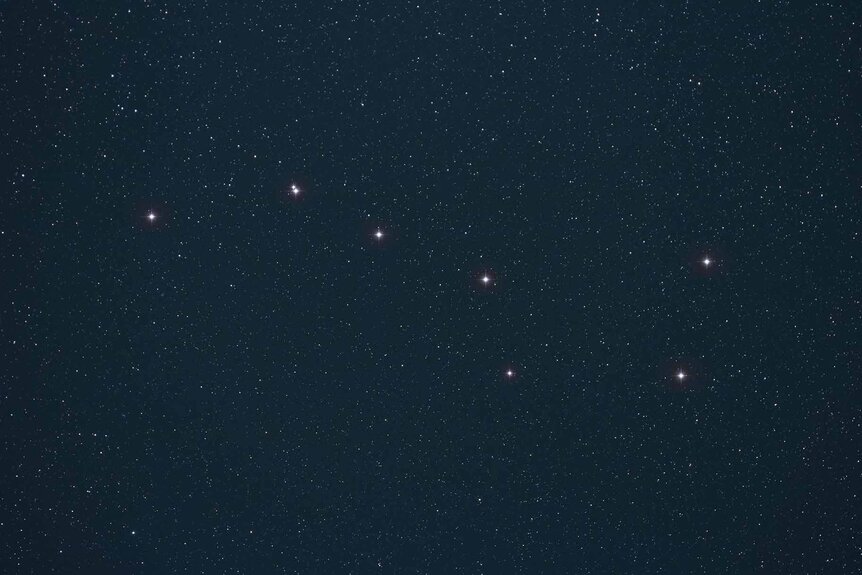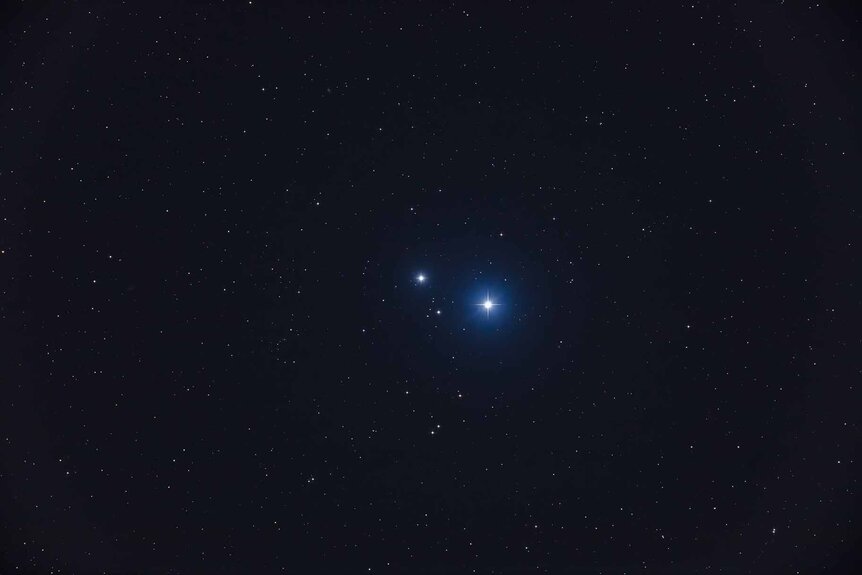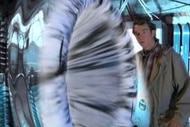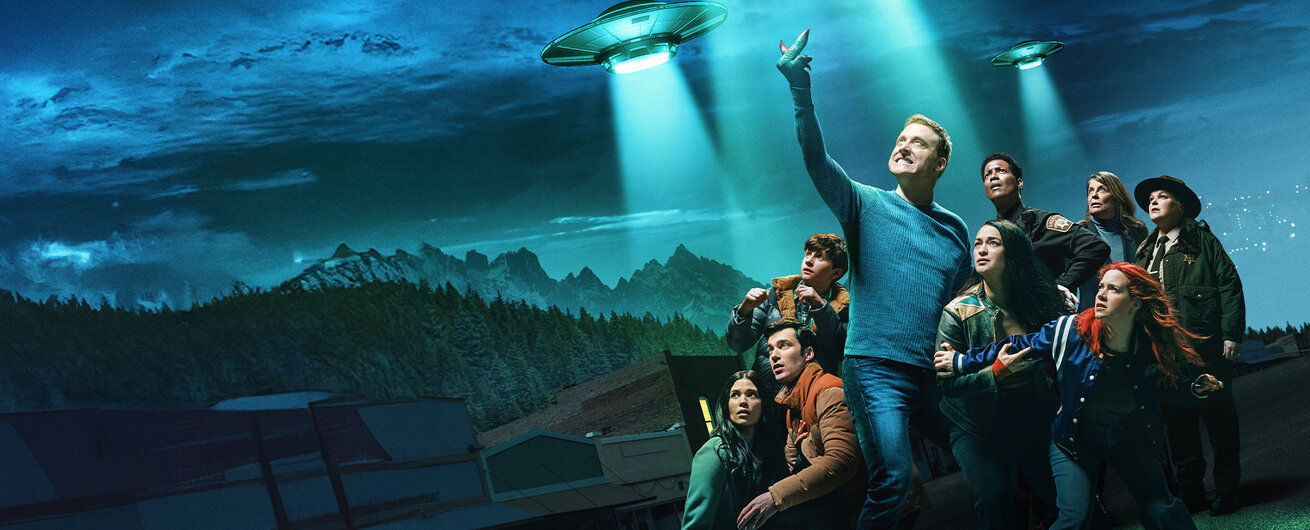Create a free profile to get unlimited access to exclusive videos, sweepstakes, and more!
What We Know about Mizar-Alcor, the Home of Resident Alien's Harry Vanderspeigle
It's like six stars in a trench coat.
Season 3 of SYFY's Resident Alien is now officially underway (watch new episodes Wednesdays on SYFY and next day on Peacock). Thus far, Harry Vanderspeigle (Alan Tudyk) has immersed himself in Earth culture, but we’ve done so little to learn about him and where he comes from. To be fair to humans, he hasn’t exactly been forthcoming with personal information. In fact, we’re not totally sure exactly where Harry comes from, but we’ve got a pretty good sense of the neighborhood.
In the fourth episode of Season 1, “Birds of a Feather,” Harry mentions that his planet is 46 light-years away, but he was either confused or he’s been lying. Because he hints at his home location two other times and it’s someplace totally different. In the Season 2 premiere, “Old Friends,” Harry mentions a home planet somewhere in the constellation Ursa Major. That’s useful information. While many constellations are unaffiliated stars that only appear close together from our perspective, many of the stars in Ursa Major, commonly known as the Big Dipper, are actually related and moving together.
A few episodes later in “An Alien in New York,” Harry confirms a position inside Ursa Major, located around a star in the middle of the dipper’s handle. You might think that solves it, but this particular “star” isn’t what it appears to be.
For More on Resident Alien:
Is Patience, Colorado Real? A Guide to the Shooting Locations of SYFY’s Resident Alien
Resident Alien Star Alan Tudyk's 9 Best Genre Roles, from Serenity to Star Wars
Resident Alien's Alan Tudyk Shares Frigid BTS Pic from Season 3 - and Thoughts On a Warmer Locale
Mizar-Alcor Is a Stellar Sextuple
Looking at the Big Dipper, you’ll see four stars making up the bowl and another three trailing off to the side, they make up the handle. Harry’s star is in the middle of the handle, and if you look closely you’ll see that it’s actually two stars snuggled up next to each other. Those two points of light are known as Mizar (brighter) and Alcor (fainter), and they form a binary system about 83 light-years from here.
When it comes to celestial social groups, our star is the weird loner. Most stars come in groups of at least two, having been born together in stellar clusters, like hatchings from the same nest. That’s why most of the stars in Ursa Major move together. They are part of what’s known as the Ursa Major Moving Group, a cluster of stars that were all born together and are moving in the same direction.
A binary star system isn’t all that unusual, but decades of astronomical research has revealed the Mizar-Alcor system to be even more crowded than we originally thought. Astronomers eventually realized that Mizar was actually two stars itself. They were dubbed Mizar A and Mizar B, and suddenly the system population was 3. Mizar A and B are 380 AU apart, roughly 10 times the distance between the Sun and Pluto, and they orbit one another every 2,000 years. But wait, there’s more!
Like cells dividing in a petri dish, the system keeps growing seemingly every time we look. It turns out that Mizar A is actually two stars orbiting one another every 20.5 days. Those stars are nearly identical and relatively young, with an estimated age of 370 million years. That’s compared to the 4.5 billion year age of the Sun. Later, astronomers realized that Mizar B was also a binary, with two stars that orbit one another every six months. That brings the count to four stars for Mizar and one for Alcor, but the actual residence of the titular Resident Alien had one more trick up its sleeve.
In 2009, astronomers confirmed the existence of a dwarf star companion orbiting Alcor, bringing the total (for now) to six. What many people see as a single star was long thought to be two. One of those stars turned out to be four and the other turned out to be two. It’s the stellar equivalent of matryoshka dolls, layers of binary stars all nested within one another.
Six stars sounds like plenty of opportunity for life to emerge, evolve into Harry and his friends, and start meddling with human affairs. However, no planets have been identified around any of the stars in the Mizar-Alcor system, to date. If Harry’s people really do hail from there, they’re doing a good job of hiding it.
See everyone’s favorite Mizar-Alcorian in Resident Alien, with new episodes Wednesdays at 10/9c on SYFY and next day on Peacock.
